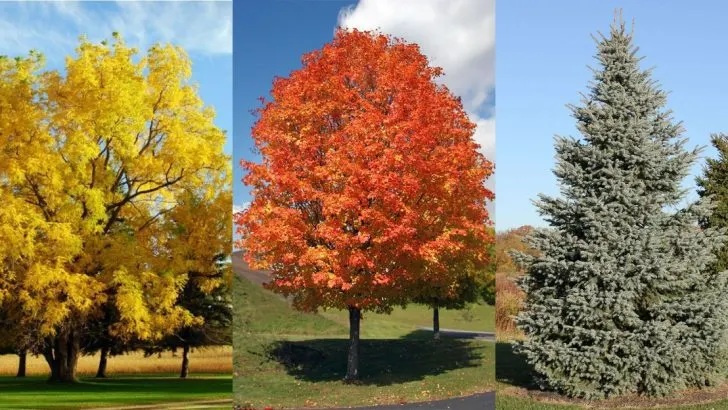Some trees absolutely hate their neighbors. They don’t just mind their own business and grow quietly. They sabotage. They steal. They kill. Plant the wrong pair side by side, and it’s not a competition—it’s a slow-motion botanical crime scene. One thrives while the other withers, choked by invisible chemical warfare or roots locked in silent battle. This isn’t garden drama. This is survival. Some trees release toxins into the soil. Others hog water like it’s gold. And a few spread faster than your neighbor’s gossip. So before you dig that next hole, get to know the rivalries beneath the bark. Because planting these 14 trees next to each other isn’t just risky— it’s a guaranteed turf war.
Black Walnut and Apple Trees

Black walnut trees, with their rugged bark and stately presence, house a secret weapon: juglone. This chemical compound, produced by the roots, leaves, and hulls of the walnut, spells trouble for apple trees. Imagine an apple tree, eager to stretch its branches and bear fruit, only to be thwarted by the toxic embrace of juglone. Apples, with their delicate blossoms, simply can’t withstand this botanical rivalry. There’s a certain melancholy in seeing these orchard staples fail to coexist, a reminder of nature’s complex tapestry. For a thriving garden, keep these historic foes at a respectful distance.
Pine and Birch Trees

The majestic pine tree, with its towering stature and evergreen needles, seems to cast a shadow both literally and figuratively over the birch tree. Pines demand a lot from the soil, consuming nutrients that birches desperately need. As the birch attempts to soak up the dappled sunlight that filters through the pine’s dense branches, it finds itself in a losing battle. The birch’s papery bark and delicate leaves are no match for the pine’s dominance. In a forest or garden setting, it’s best to give these trees their own space, allowing each to flourish without competition.
Eucalyptus and Most Other Trees
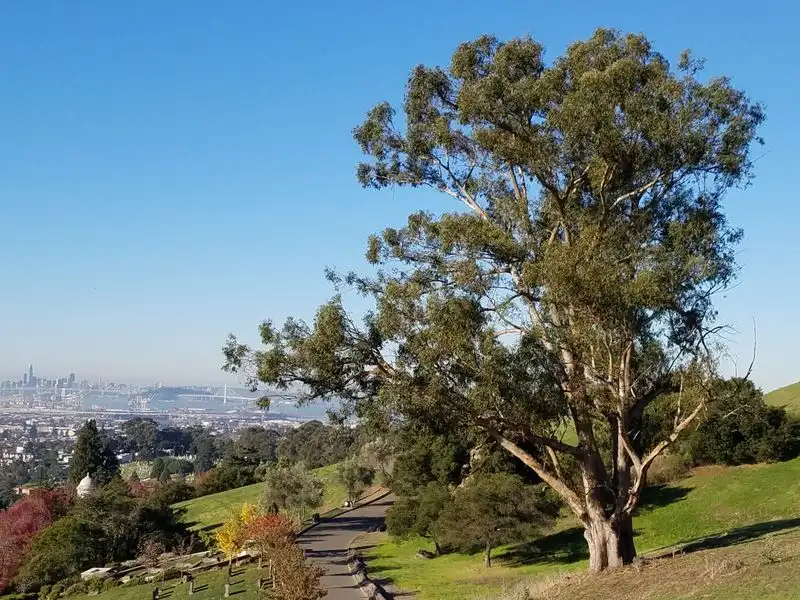
Eucalyptus trees, known for their distinctive, aromatic leaves and peeling bark, harbor a little secret. They produce allelopathic chemicals that inhibit the growth of many neighboring trees and plants. Picture the eucalyptus standing proud and aloof, while the flora around it languishes. This is a tree that thrives in isolation, asserting its dominance in any landscape. Native trees often fail to compete, leaving the eucalyptus as the solitary victor. When planning a garden, it’s wise to consider the eucalyptus’ independent nature and place it away from potential adversaries.
Black Locust and Red Maple
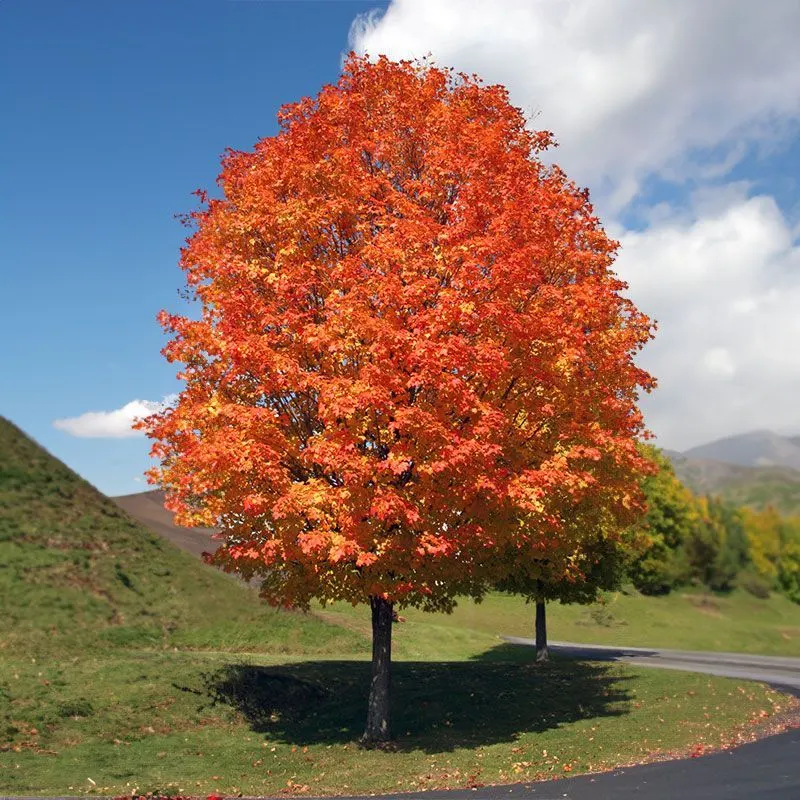
The black locust, with its rugged bark and fragrant white blossoms, may appear innocuous, but it has a competitive streak. It aggressively spreads through root suckers, often encroaching on the territory of the red maple. The red maple, with its striking scarlet leaves, struggles to find its footing amid this invasion. The black locust’s dense foliage casts a heavy shade, depriving the maple of sunlight. It’s a classic tale of survival of the fittest. In mixed plantings, these two are better admired from afar, each allowed to showcase its unique beauty without interference.
Cedar and Apple Trees
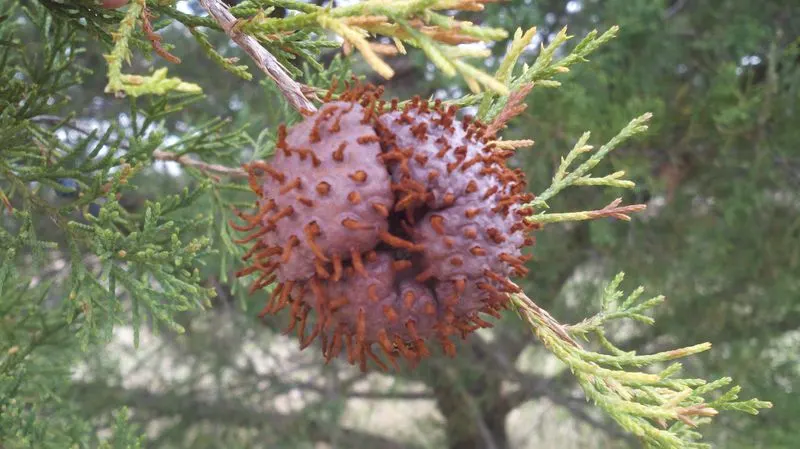
Cedar trees, with their dense, aromatic foliage, harbor a fungus called cedar-apple rust. This rust thrives in the presence of apple trees, launching an assault on their leaves and fruit. Imagine an orchard with apples gleaming in the morning sun, only to be marred by the unsightly rust spots. Apple trees, unable to fend off this fungal foe, often suffer in the cedar’s presence. While both trees have their charm, they’re best kept apart to avoid this destructive dance. For a healthy orchard, keep these trees at a safe distance from each other.
Spruce and Fir Trees
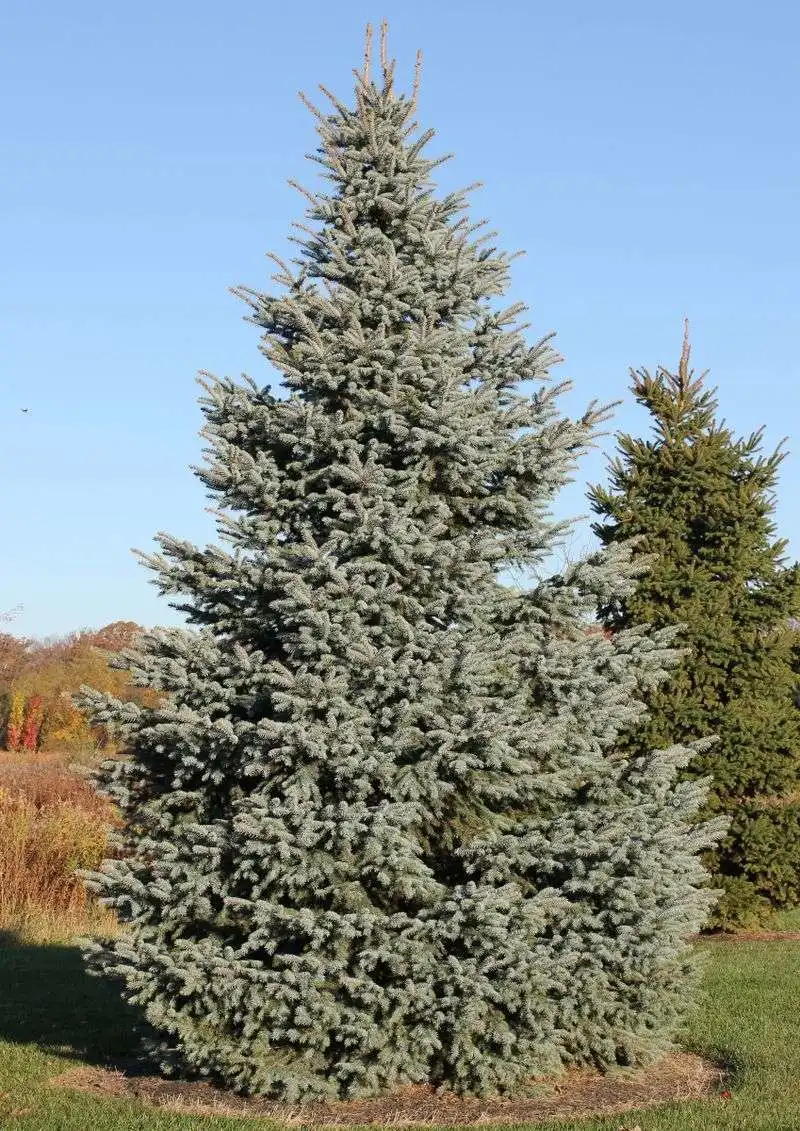
Spruce trees, with their iconic conical shapes and dark needles, dominate the landscape, often at the expense of fir trees. The spruce’s dense canopy blocks sunlight, creating a challenging environment for the fir’s growth. In the cold embrace of winter, these trees showcase a rivalry as old as the forests themselves. The fir, with its softer, lighter needles, finds itself overshadowed, struggling to thrive. They embody a quiet tension, each vying for supremacy in the snowy tableau. In landscapes where both trees are desired, careful planning is necessary to ensure harmony.
Olive and Cypress Trees
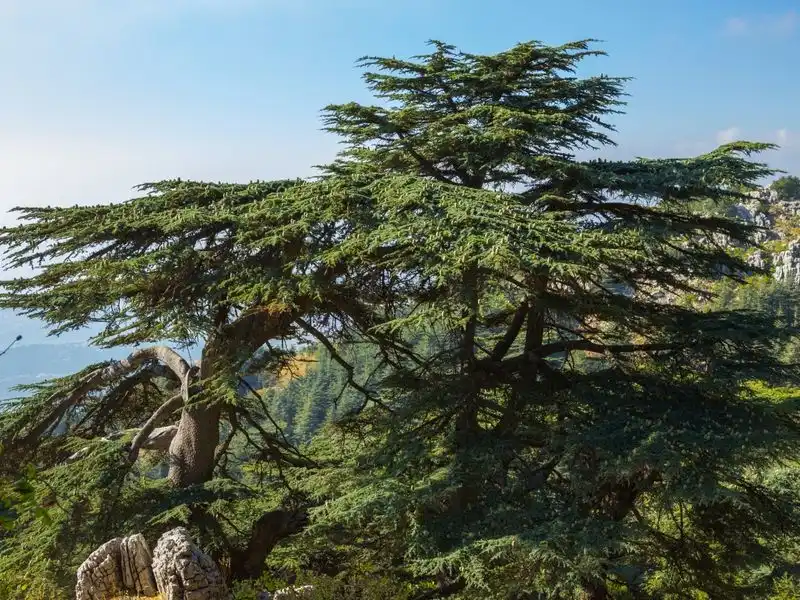
Olive trees, famed for their gnarled trunks and silvery leaves, find an adversary in the tall, slender cypress. The cypress’s roots are dense and thirsty, often outcompeting the olive for moisture and nutrients. In Mediterranean gardens where both are found, the olive sometimes appears weary, its branches heavy with the burden of competition. The cypress, with its unyielding stature, seems to pierce the sky, leaving the olive in its shadow. For those cultivating a Mediterranean landscape, consider separating these two iconic trees to allow each to thrive in its own right.
Sycamore and Willow Trees
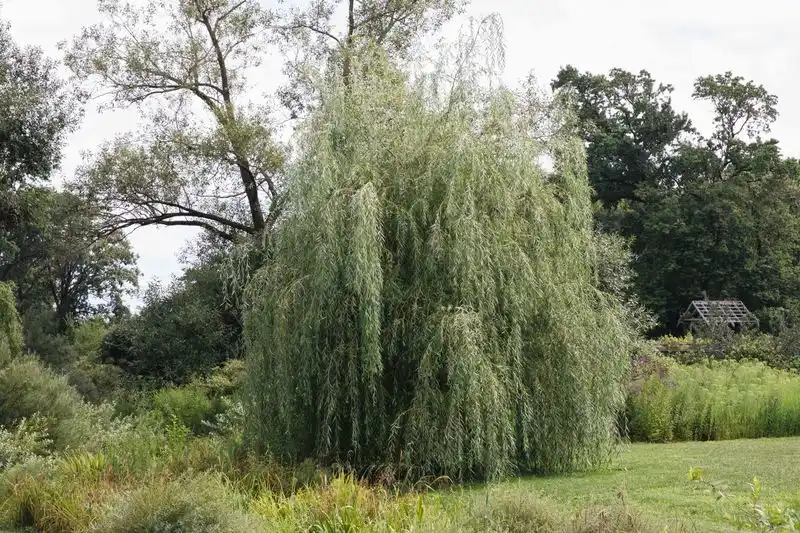
Sycamore trees, with their broad, spreading branches, create an imposing presence that can overwhelm the graceful willow. Willows, known for their drooping branches and affinity for water, struggle under the sycamore’s broad canopy. The competition for water and nutrients along riverbanks where both might grow naturally can be fierce. The sycamore’s robust growth often leaves the willow languishing, unable to capture the necessary resources. For harmonious riverbank plantings, it’s advisable to allow these trees their own space to weave their distinct charm without conflict.
Maple and Oak Trees

Maple trees, with their vibrant autumnal hues, often find themselves overshadowed by the mighty oak. Oaks, with their sprawling branches and deep root systems, monopolize sunlight and soil nutrients. The maple’s delicate leaves and slender branches can’t compete with the oak’s grandeur. In a woodland setting, these trees tell a story of unequal struggle, the oak towering protectively over the maple. To ensure both species thrive, consider placing them apart, allowing the maple to bask in unfiltered sunlight and reveal its true colors in the fall.
Ash and Elm Trees
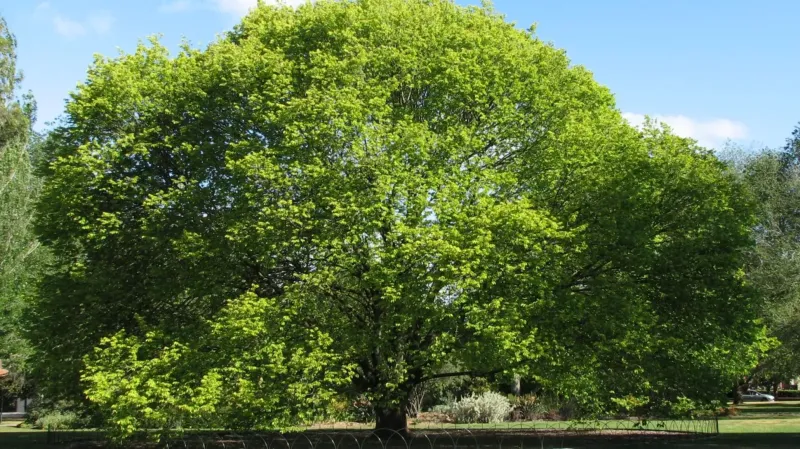
Ash trees, with their textured bark and elegant form, often compete fiercely with elm trees for space and resources. The elm, with its graceful arching branches and delicate leaves, struggles to find its place in the ash’s shadow. Urban parks where both might be planted showcase this silent struggle, as the ash’s rapid growth can outpace the elm’s adaptability. This rivalry often leaves the elm appearing lackluster, its leaves yellowing prematurely. For city planners and landscapers, spacing these trees apart can lead to a more balanced, harmonious urban environment.
Cherry and Walnut Trees
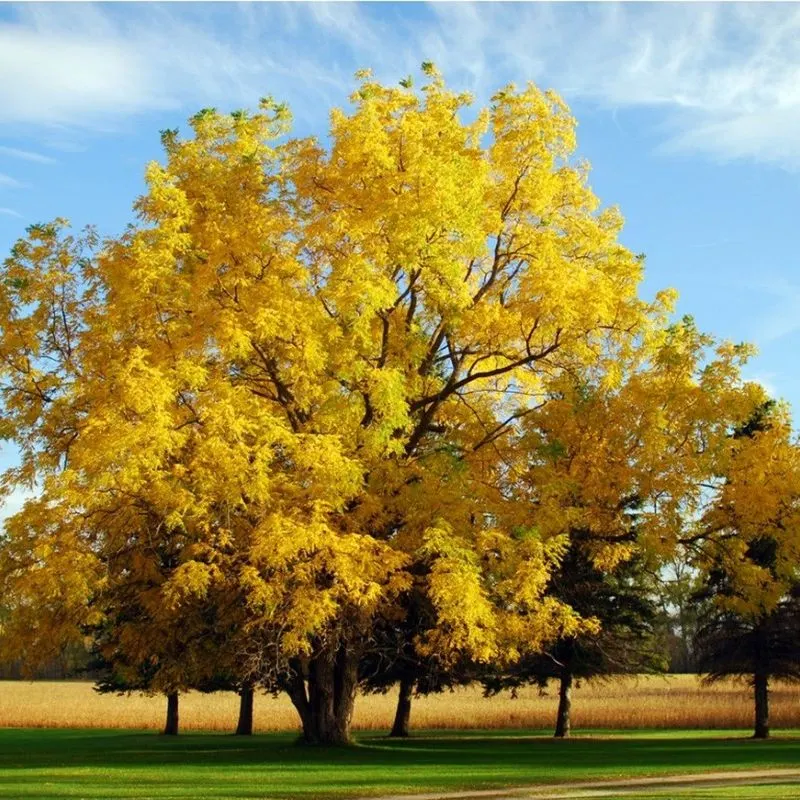
Cherry trees, with their breathtaking spring blossoms, face a formidable adversary in the walnut. The walnut tree’s roots produce juglone, a chemical that inhibits the growth of many plants, including cherry trees. Imagine a cherry tree, its branches bursting with pink blooms, suddenly halted by the walnut’s stealthy chemical warfare. This botanical clash often leaves cherry trees wilting and less productive. Gardeners wishing to enjoy both cherries and walnuts should plan their planting areas carefully, ensuring these two don’t cross paths in their territorial dance.
Linden and Poplar Trees
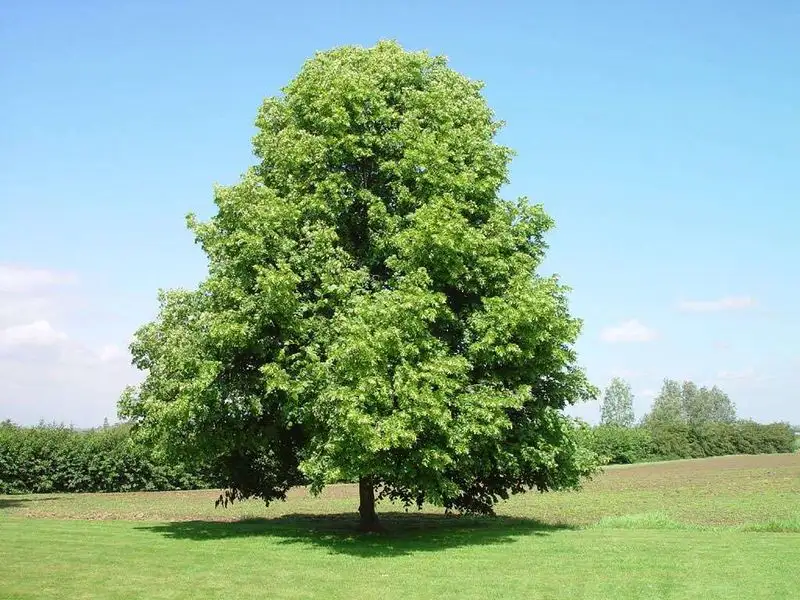
Linden trees, with their heart-shaped leaves and sweet fragrance, are often overshadowed by the towering poplar. Poplars, known for their rapid growth and towering presence, outcompete lindens for light and nutrients. The linden’s gentle blooms struggle to thrive amidst the poplar’s ambitious climb to the sky. In landscapes where both are found, the poplar often dominates, leaving the linden in a state of quiet resignation. To preserve the unique beauty of each, it’s wise to plant them apart, allowing the linden to bask in gentle sunlight and showcase its fragrant blooms.
Hickory and Redbud Trees
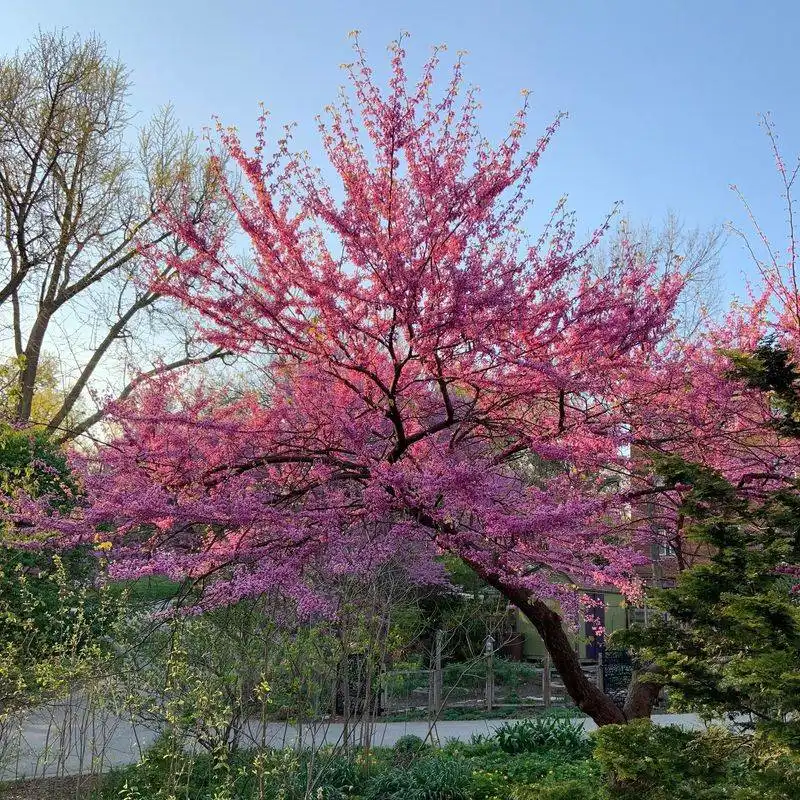
Hickory trees, with their robust branches and towering presence, cast a formidable shadow over the delicate redbud. Redbuds, known for their exquisite pink blooms in spring, struggle to compete for sunlight and nutrients. The hickory’s thick leaves block light, leaving the redbud stunted and yearning for growth. This juxtaposition creates a stark contrast, with the redbud’s potential beauty subdued beneath the hickory’s dominance. For gardeners desiring both trees, providing ample space ensures the redbud can flourish, gracing the garden with its vibrant seasonal display without hindrance.
Bamboo and Most Trees
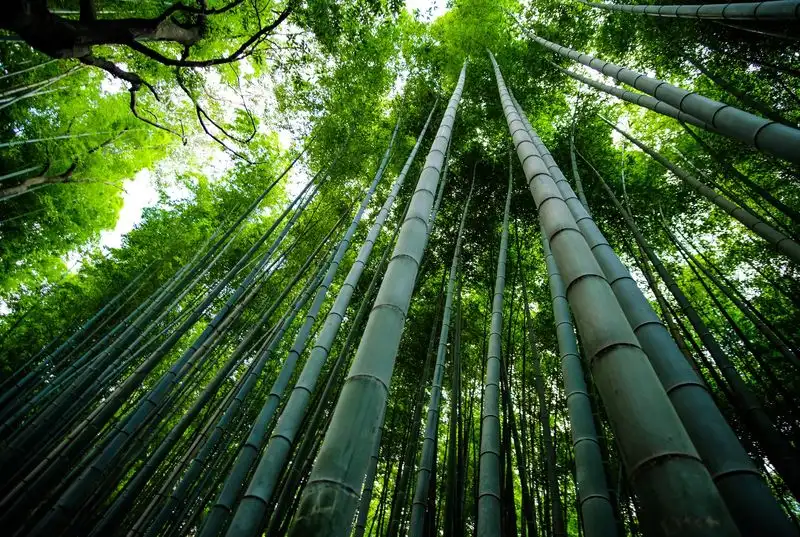
Bamboo, with its rapid growth and towering green stalks, is a relentless competitor. Its root system spreads aggressively, encroaching on the territory of most trees. Picture a garden intended for tranquility, disrupted by bamboo’s invasive nature. Trees planted in its vicinity often find themselves deprived of essential nutrients and space. The bamboo’s dominance creates an environment where few can compete. If cultivating a peaceful, diverse garden, consider confining bamboo to a separate area, allowing other trees a chance to thrive unimpeded. Its beauty lies in containment, offering elegance without encroachment.

